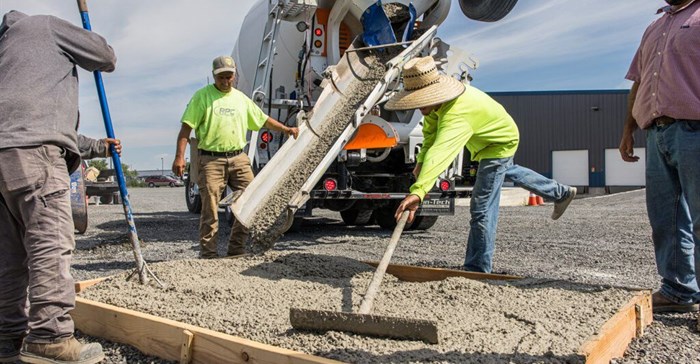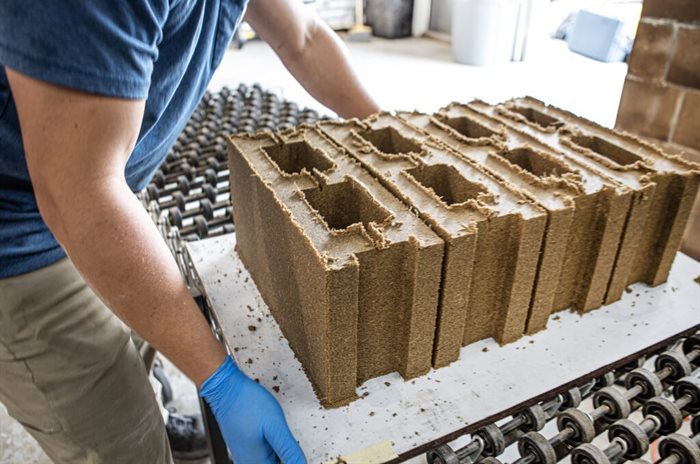
Subscribe & Follow
Jobs
- Junior Site Foreman Knysna
- Receptionist Blackheath
- Electrical Assistant Nelspruit
- Electrical Construction Operator Level 1 Nelspruit
- Electrical Construction Operator Level 2 Nelspruit
- Strategy Executive Pretoria
- Human Resources Manager Johannesburg
- Senior Manager: Legal and Compliance Johannesburg
- Electrical and Mechanical Assistant Paarl
- Architectural Technician George
Carbon negative home is proof of concept for green concrete

The home is built by Partanna Global, a technology company that creates this special type of concrete using natural and recycled materials activated by brine, a saltwater solution.
It’s the first of its kind in the world and aims to reduce the environmental impact of the construction industry, which is one of the major sources of greenhouse gas emissions.
“Standing on the forefront of climate peril, we Bahamians have always been bound by resilience and innovation,” said Philip E. Davis, the prime minister and minister of finance for the Commonweath of the Bahamas in a statement.
"Today, as we unveil the world’s first carbon-negative concrete home right here in Nassau, it is a testament that the answers to our global crises often come from those most affected."
Seawater safe
Home for the World is also designed to be resilient to seawater, making it more suitable for coastal communities that are vulnerable to climate change. The unique material strengthens when exposed to seawater, unlike traditional concrete that corrodes and cracks.
The project is part of Microsoft’s commitment to be carbon negative by 2030 and to support the development of a market for green building materials. The tech giant has invested in Partanna through its $1bn Climate Innovation Fund, which aims to accelerate solutions for decarbonising concrete, steel, and other sectors.

"The world is forecast to build an area equivalent to the size of the Bahamas every three years. The need to disentangle development from pollution has never been more pressing,” said Rick Fox, former pro basketball player for the LA Lakers and cofounder of Partanna in a statement.
"Our Home for the World is the answer to this challenge, and the Bahamas, having experienced the devastation of Hurricane Dorian firsthand, is the symbolic birthplace for our movement to change the way the world builds - for good."
The inaugural Home for the World is the first of 1,000 planned properties constructed in partnership with the Bahamian government. The houses are planned primarily for first-time homeowners in the country who have been pre-qualified by the government.
Microsoft experiments
Microsoft is experimenting with different types of concrete that have lower embodied carbon, a measure of the greenhouse gas emissions associated with the production and use of a material.
The company aims to reduce the environmental impact of its datacentres and other buildings, as well as to support the development of a market for green building materials.
One of the climate fund’s investments is CarbonCure, which injects captured carbon dioxide into concrete to make it stronger and less carbon intensive4. Another is Prometheus Materials, which produces zero-carbon bio-cement and bio-concrete from microalgae.

The fund also invested in Boston Metal, which aims to produce green steel using renewable energy and electrolysis.
Microsoft hopes that these innovations will help create a competitive and transparent market for low-carbon building materials that will enable the company and other entities to meet their sustainability goals.

Related
Capital markets bolster Murray & Roberts with R130m for business rescue efforts 21 Jan 2025 Corobrik using cautious optimism as key to success in 2025 16 Jan 2025 China Development Bank releases $255m for Nigeria rail project 9 Jan 2025 Now is the time for the property sector to re-think risk 24 Oct 2024 Afribiz Invest joins forces with the South African Construction Awards 27 Aug 2024 #GeorgeCollapse highlighted importance of compliance 16 Aug 2024 #WomensMonth: The rise of gender-specific PPE in construction 6 Aug 2024 Bell Equipment to go private after family-led takeover 17 Jul 2024








